Include these stately flowers that begin with the letter Q in your garden for a royal-inspired look. These plants will add a touch of luxury to your yard because of their regal names like Queen Anne’s Lace and Queen of the Night. So get a cup of tea, sit up straight, and let’s start browsing.
Flowers That Start With Q – List Of Flowers That Name Starts With the Letter ‘Q’
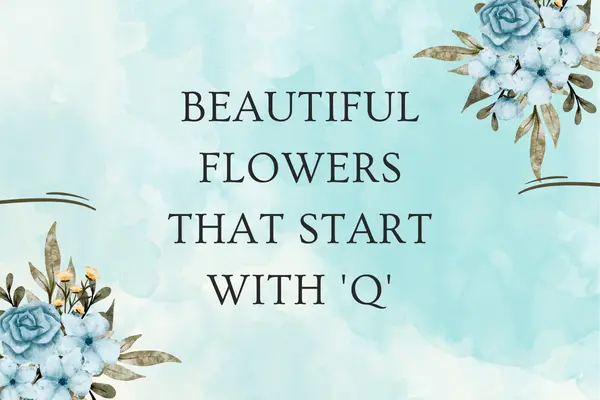
Quaker Ladies
Bluets are a type of small, delicate wildflower that can bloom in your landscaping or in woodland areas. You might be curious as to why they are referred to as Quaker ladies if you search for them online. From what we could discover, the name derives from the flower’s shape, which resembles the caps that Quaker ladies used to wear frequently.
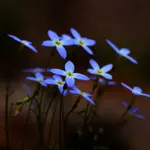
Other accounts claim that the reason they are known as Quaker lady bluets is that the flower’s light tint is similar to the hues of the fabric used in Quaker women’s dresses. Wildflower bluets are a charming addition to any yard or garden, regardless of how they received their name.
The Latin word caerulea, which means “blue,” is where the name “wildflower bluets” originates. The southern regions of Canada and Nova Scotia are home to these small mounding flowers.
Annual bloomers are considered perennial flowers. In the spring, you can find them in New England and as far south as Florida and Texas. The Quaker lady bluet’s tiny flowers can be white, pink, or have yellow centers.
Queen Anne’s Lace
A biennial subspecies of plant in the parsley family (Apiaceae), Queen Anne’s lace (Daucus carota carota), popularly known as wild carrot, is an ancestor of the domesticated carrot. It often has bristly, split leaves and reaches a height of 1.5 meters (5 feet).

It produces ribbed fruits with sharp spines in umbels (flat-topped clusters) of white or pink flowers with a single dark purple blossom in the center. Although bitter, the larger root is palatable. It is originally from Eurasia but has now spread to almost every continent and is occasionally grown for decorative purposes.
Originally from Europe, the Queen Anne’s lace plant, often known as the wild carrot, is a stunning wildflower herb that is now widespread throughout the United States. Despite being often regarded as an invasive weed, the plant can actually make a beautiful addition to a wildflower garden in your own yard. Just be sure to check with your local extension office to see how invasive it is in your region first!
Beautiful biennial Queen Anne’s lace herb (Daucus carota) can grow as high as 4 feet (120 cm). Its flattened cluster of tiny white flowers with a dark-colored floret in the middle, tall hairy stems, and exquisite fern-like foliage are its distinguishing features. This plant blooms from spring to fall during its second year.
Queen’s Cup
A lovely forest perennial known as Clintonia uniflora (Queen Cup), it has a basal clump of 1-2 fleshy, oblong, glossy green leaves that can grow up to 6 inches long (15 cm).
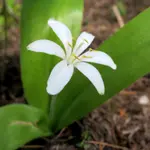
A leafless blooming stalk climbs considerably above the basal rosette from late spring to mid-summer. It produces one or two white flowers that resemble stars and have vivid yellow stamens. A stunning amethyst-blue berry follows each blossom in the late summer.
Many people like the berries that the ruffled grouse produces. They look great in bunches and will happily grow to make a gorgeous ground cover in cool, damp, shady settings under trees. This North American species has a 30-year life span or greater.
The plant develops in clusters that may reach a height and width of 6 to 10 inches (15-25 cm). It is a plant that grows in the understory and has thin rhizomes that gradually spread out to produce sizable colonies that can persist for a very long time.
You should be cautious of slugs and snails, although it is not vulnerable to significant pests or illnesses. You may grow more of it by sowing seeds or dividing the roots in the spring. Typically, it takes seedlings up to 4 years to blossom. Western North America is its native region.
Queen of the Meadow
In Woodland Gardens, the Queen of the Meadow (Filipendula ulmaria) frequently grows along trails and in wetland regions. Salicylic acid, a key component of aspirin, was originally isolated from the blossoms of this herb, a native of Europe, in 1839.
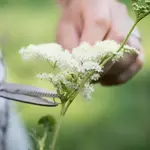
Eupatorium purpureum, an erect non-native perennial with angled or grooved stems that branch, reaches heights of 3 to 7 feet. The stems can range in hue from green to crimson.
The leaves are compound, pinnately divided into leaflets, doubly serrated along the edges, conspicuously veined, deeper green on top, and gray-white and finely haired on the underside. Three to seven lobes make up the terminal leaflet. In 2 to 4 pairs, the lateral opposing leaflets are typically not lobed. At the base of the leaf stalk are two tiny leaf segments known as stipules.
Quince
Eastern Asia is the original home of the genus Flowering Quince, which contains three species of flowering plants. The genus’ members are linked to Chinese quince (Cydonia oblonga) and traditional quince (Cydonia oblonga) (Pseudocydonia Sinensis).
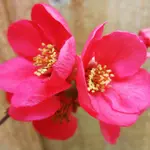
Although its bitter apple-like fruit can be used in preserves and liqueurs and holds some potential as an alternative fruit crop, flowering quince is largely grown for its gorgeous blooms.
Each of the three species of blooming quince is a spiny deciduous shrub with simple, alternating leaves that have serrated (toothed) margins. In the late winter or early spring, the plants bloom. The flowers can be up to 4.5 cm (1.8 inches) in diameter and have five petals. A pome is the shrub’s fruit.
Queen of the prairie
Native to North America, the queen of the prairie is a fairly low-maintenance plant. Additionally, it is incredibly beneficial to wildlife and will draw a wide variety of pollinators.
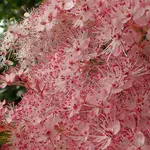
Queen of the Prairie should be planted alongside spider flower, purple coneflower, black-eyed Susan, bee balm, salvia, lobelia, and aster if you want to create a meadow in your yard. Add local grasses like “Cheyenne Sky” switch grass, “Carousel” small bluestem, and blue sedge for a striking texture contrast.
Queen’s wreath
With its hanging lavender blossoms, the Queen’s wreath, or Petrea Volubilis, is a lovely tropical vine that resembles wisteria. The names Petrea, purple wreath, and sandpaper vine are some of the other frequent names for this vine. The plant’s stiff, sandpaper-like leaves gave rise to the name “sandpaper vine,” which the plant is also known by.
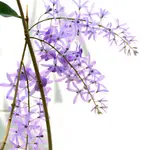
A tropical plant called the queen’s wreath (Ipomoea alba) thrives in hot, muggy environments. It is indigenous to many places, from Southern Mexico and Central America all the way down to Paraguay in South America. Additionally, Puerto Rico, Hispaniola, Jamaica, and Cuba all have healthy populations of this adaptable plant. Queen’s wreath vines thrive in Florida’s environment, so if your garden is in zone 9B or below and you reside there, you’re in luck.
Every year, the Queen’s wreath blooms several times, with the busiest blooming phases falling between February and June. The raceme-shaped group of blooms, which are closely clustered together, has the appearance of a cluster of grapes from a distance. The real blossoms are tiny and purplish-blue or light blue in colour.
The calyces will eventually be left behind as they fall. The calyx, the base of a flower, is typically green, but the calyces of the queen’s wreath are purple and just as lovely as the actual flower petals. The calyces will continue to grow for a number of weeks, adding some extra colour to your environment.